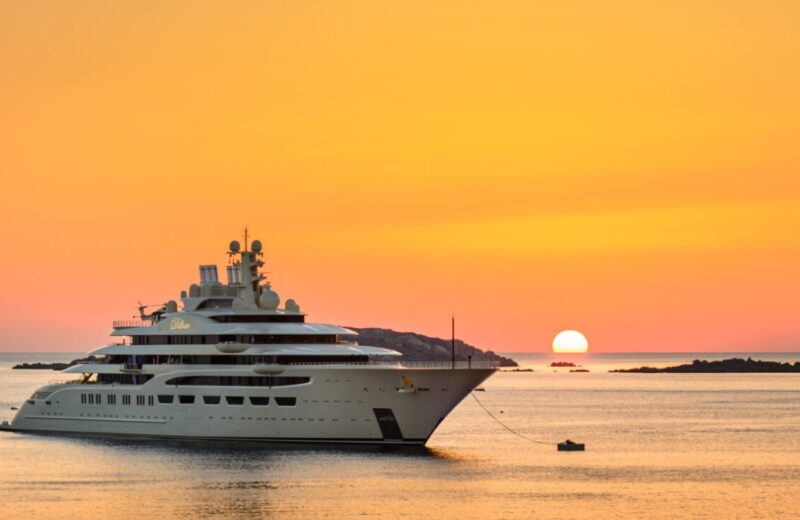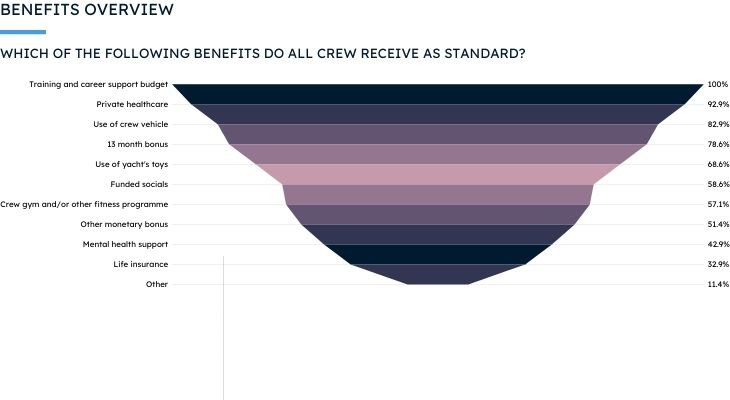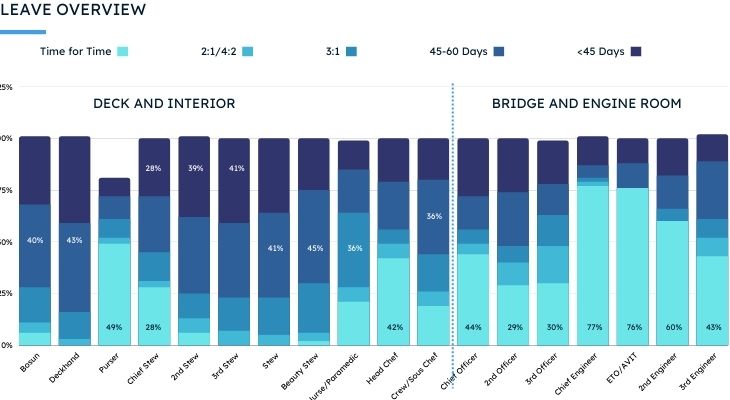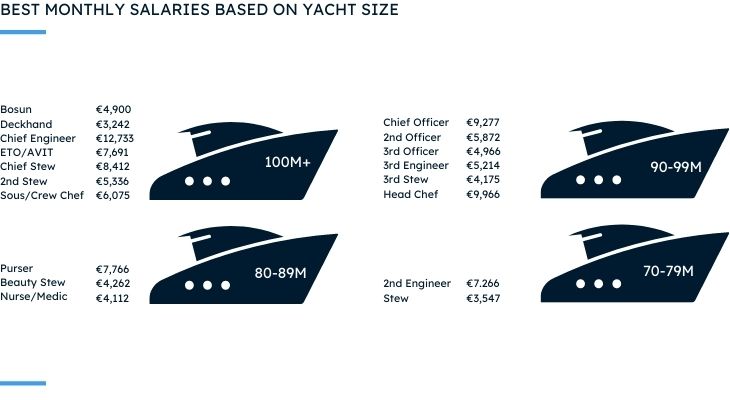Survey: The bigger the yacht, the smaller the benefit

Crew on larger 100m+ (328ft) yachts often have worse benefits than colleagues on smaller yachts according to a survey from Quay Crew. The UK-based crew recruitment agency warns owners that crew who do not receive decent pay, benefits and leave time will move yachts.
The survey results were conducted using answers from 170 superyacht captains who provided information on salary, leave and benefits packages for over 1,500 crew in all departments.
Tim Clarke, director, Quay Crew, told Superyacht Investor (SYI): “There are definitely 100m plus yachts offering incredible packages, but equally there’s some that aren’t as well. Once you start getting to 100m plus, you’ve got a huge amount of crew on board and the cost of pushing out these benefits to every crew member is extensive and becomes challenging to manage.”
Larger yachts typically give the crew access to a gym or fitness programme, but other benefits decline as the size of the yacht increases. Crew on larger yachts are less likely to get private healthcare, be allowed to use toys, or receive a 13-month bonus or life insurance.
Quay Crew says that 40m-49m (131ft-160ft) yachts are the most generous for private healthcare and 13-month bonuses. Crew on 50m to 100m yachts are more likely to allow crew to use toys and most like to fund social events.
“If your yacht is not offering a comprehensive benefits package on top of a good salary and leave, your crew turnover will definitely be higher and the crew will leave sooner rather than later,” said Clarke.

The survey also highlighted that 19% of yachts have improved leave packages in the last 12 months. A further 40% are either actively in the process or planning to do so in the coming year.
“Some yachts have been very slow to adapt to the changing employment market within the yachting industry,” said Clarke. “They’re being run on a tight budget. Of course, the reality is, that the more leave and benefits someone gets, the more it costs the yacht. This budget comes down from the owner but a factor they need to remember is that crew turnover comes with a significant cost too.”
Rotation is the most common form of leave for over half of the roles featured in the survey. Bosuns largely get 46-60 days of leave, while 28% of chief stewards get less than 45 days of leave.
“Moving forward, some yachts will struggle to recruit good crew and also massively struggle to retain them if they don’t improve what is on offer. If you’re a chief stew on a vessel that is only offering 45 days and you’ve got a good CV, you’ll easily find a yacht which is offering a better package,” Clarke added.

Over half (58%) of the captains surveyed review pay annually as standard. Although the salaries mostly rise as yachts get larger, the survey showed that junior stewards and second engineers are paid the best salaries in the 70-79m (229-259ft) range. Pursuers, beauty stewards and medics also get paid better onboard 80-89m (262-291ft) yachts compared to the larger vessels.
Clarke said that there are a handful of yachts who are paying salaries below the industry standard of €2,500 ($2,643) per month. “These yachts are completely taking advantage and paying significantly less than the industry standard, which is very disappointing. This would not be a yacht I would recommend to anyone that they join.”

“Covid has made everyone reassess their career goals and work-life balance, seeking out more leave over higher salaries and some yachts are starting to take notice,” Clarke concluded. “With the superyacht sector experiencing an extreme candidate shortage and increased competition to secure the best crew in the fastest possible timeframe, yachts need to evolve their offering.”
Image credit: Quay Crew

